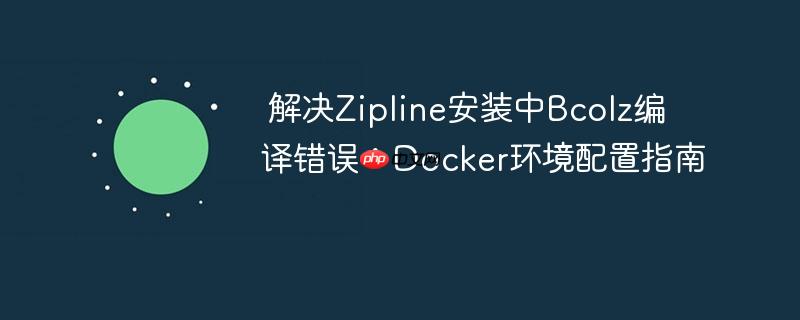
本文旨在解决在docker环境中安装Zipline时,由于bcolz库编译失败导致的安装问题。通过指定Cython版本、使用get-pip.py安装pip,以及选择合适的python基础镜像,可以有效规避`bcolz`编译错误,顺利完成Zipline的安装,从而进行量化回测研究。 ### 问题分析 在构建Zipline的Docker镜像时,可能会遇到`bcolz`库编译失败的问题,错误信息通常包含`Building wheel for bcolz (setup.py): finished with status ‘Error’`,并伴随Cython编译错误,例如`Cannot assign type ‘double’ to ‘npy_intp’`。这通常是由于Cython版本过高或Python环境配置不当引起的。 ### 解决方案 以下步骤提供了一种解决此问题的方案,特别针对Docker环境下的Zipline安装: 1. **指定Cython版本:** Zipline可能与某些高版本的Cython不兼容。建议使用较低版本的Cython,例如0.28。在Dockerfile中添加以下命令来安装指定版本的Cython: “`dockerfile RUN pip install cython==0.28
-
使用get-pip.py安装pip: 避免直接使用系统自带的pip进行升级或安装,而是使用get-pip.py脚本来安装pip。这可以确保pip的版本和配置与Python环境兼容。
RUN curl "https://bootstrap.pypa.io/pip/3.6/get-pip.py" -o "get-pip.py" RUN python get-pip.py
请注意,上述代码中的3.6应替换为您的python版本。
-
安装依赖: 在安装bcolz之前,安装必要的依赖项,例如setuptools-scm和numpy。
RUN pip install setuptools-scm numpy
-
安装bcolz: 在requirements.txt文件中,仅包含bcolz,不要指定版本。然后使用pip安装依赖项。
RUN pip install -r requirements.txt
requirements.txt 内容示例:
bcolz
-
更换基础镜像 (如果需要): 如果上述步骤仍然无法解决问题,并且出现类似于blosc error: conflicting types for ‘_xgetbv’的错误,则可能需要更换Python的基础镜像。不同的基础镜像可能包含不同的系统库和依赖项,这可能会影响bcolz的编译。
例如,可以尝试使用更精简的镜像,或者包含特定依赖的镜像。
完整Dockerfile示例
以下是一个完整的Dockerfile示例,展示了如何应用上述解决方案:
FROM python:3.6 WORKDIR /myfile COPY requirements.txt /myfile/ RUN apt-get update && apt-get install -y build-essential wget python-dev && wget http://prdownloads.sourceforge.net/ta-lib/ta-lib-0.4.0-src.tar.gz && tar -xvzf ta-lib-0.4.0-src.tar.gz && cd ta-lib/ && ./configure --prefix=/usr && make && make install && cd .. && rm -rf ta-lib* && fc-cache -fv && rm -rf /var/lib/apt/lists/* RUN curl "https://bootstrap.pypa.io/pip/3.6/get-pip.py" -o "get-pip.py" RUN python get-pip.py RUN pip install cython==0.28 RUN pip install setuptools-scm numpy RUN pip install -r /myfile/requirements.txt RUN mkdir -p /root/.ipython/profile_default/startup && echo "import matplotlib.pyplot as plt" >> /root/.ipython/profile_default/startup/00-startup.py && ENTRYPOINT ["jupyter", "notebook", "--ip=0.0.0.0", "--port=8888", "--no-browser", "--allow-root", "--notebook-dir=/myfile"]
注意事项
- 在尝试上述解决方案之前,请确保您的系统已安装所有必要的编译工具,例如build-essential和python-dev。
- 不同的Zipline版本可能对Cython版本有不同的要求,请参考Zipline的官方文档或社区讨论,选择合适的Cython版本。
- 如果仍然遇到问题,可以尝试在干净的虚拟环境中安装Zipline,以排除其他依赖项的干扰。
总结
通过指定Cython版本、使用get-pip.py安装pip,以及选择合适的基础镜像,可以有效地解决在Docker环境中安装Zipline时遇到的bcolz编译错误。这些步骤可以帮助您顺利完成Zipline的安装,并开始进行量化回测研究。


评论(已关闭)
评论已关闭